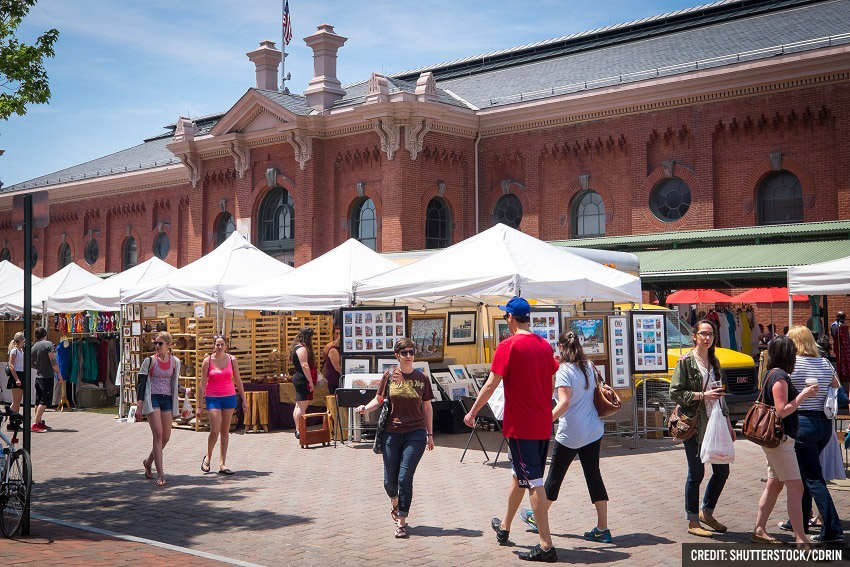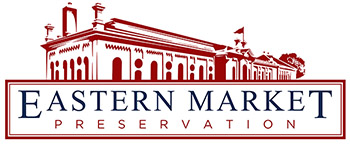
The historic Market is at a turning point. Will it remain an authentic and unique fresh food market with a 145-year tradition or become another ubiquitous food court. Many challenges face the Market, but the problems are solvable when the community, merchants, vendors, and local government work together. The following list of challenges is based on the 2018 report, DC’s Eastern Market: How to Save an Endangered Treasure.
Governance and Budget
- Eastern Market Management and Regulation law (§§ 37-101-37-113) is not being followed. The law calls for:
- Market management to be contracted to a not-for-profit association or corporation having experience operating an historic urban fresh food or farmers’ market (§§ 37-105).
- A market manager with experience relevant to running an urban fresh food or farmers market (§§ 37-101).
- Actual farmers to sell their locally grown produce 9 (§§ 37-101).
- Handcrafted goods and artwork, that are the original work of the vendor (§§ 37-101).
- Limitations for imported hand-crafted and indigenous goods including the requirement that the vendor be the importer of those crafts (§§ 37-101).
- DC to pay for capital improvements ((§§ 37-102).
- An Enterprise Fund to receive revenues and proceeds from whatever source on behalf of Eastern Market and to be used for management and maintenance of Eastern Market and for no other purpose (§§ 37-103).
- Written leases (§§ 37-107).
- Lack of a consolidated budget, lack of requests for capital improvements, and lack of transparency.
- DC has not processed the merchants’ request for long-term leases for over ten years.
Physical Plant
- Ten years after the fire, the building and equipment are badly in need of repair.
- Merchants face deteriorating refrigeration equipment with no obvious ability to repair or replace it.
Outside
- The Farmers line has an underrepresentation of actual producers.
- Over time the Farmers line has shrunk and farm stalls have been replaced with sunglass sellers and other non-produce vendors.
- The quality of arts and crafts have deteriorated over the years with very few actual artist and crafts people selling their creations.
- A street Arts & Crafts Flea Market that was to be temporary dilutes the image of the Market and takes up valuable parking spaces. Relocate to C Street Plaza as originally planned.
- Street closures on weekends prevent fresh food shoppers from efficiently being able to shop at the South Hall Market merchants.
- Prepared food located on the outside surrounding the Market dilutes the image of the Market as a source of fresh food. Consolidate on the Natatorium plaza.
- Lack of parking on weekends discourages shoppers on what should be the busiest two days of the week.
Inside
- No plan to compete effectively with nearby Trader Joe’s, Whole Foods and Harris-Teeter supermarkets.
- Lack of food production on site with good smells.
- Lack of proper ventilation to vent bad smells.
- Limited tenant mix
- North Hall uses that makes the Market feel empty as people approach the Market from the north end and does not contribute to the success of the inside merchants.
Promotion
- Lack of a comprehensive public relations strategy for the Market that reaches various demographic groups and various ages.
- A lack of promotion of the inside tenants.
- Lack of signage.
- The need for training regarding display, and other critical business practices.
- The lack of special events geared toward educating and attracting customers (health education, caring for knives, etc.).
